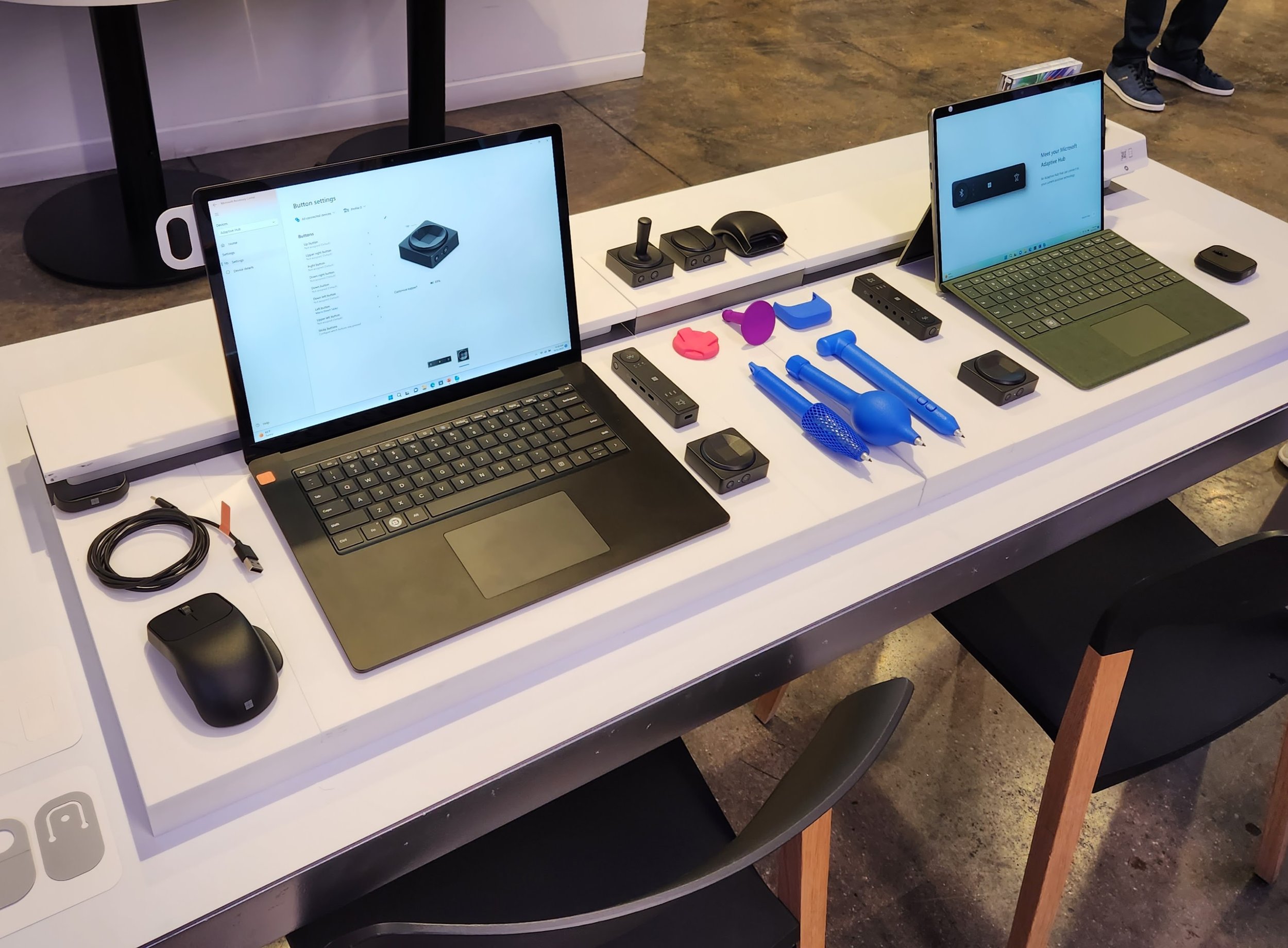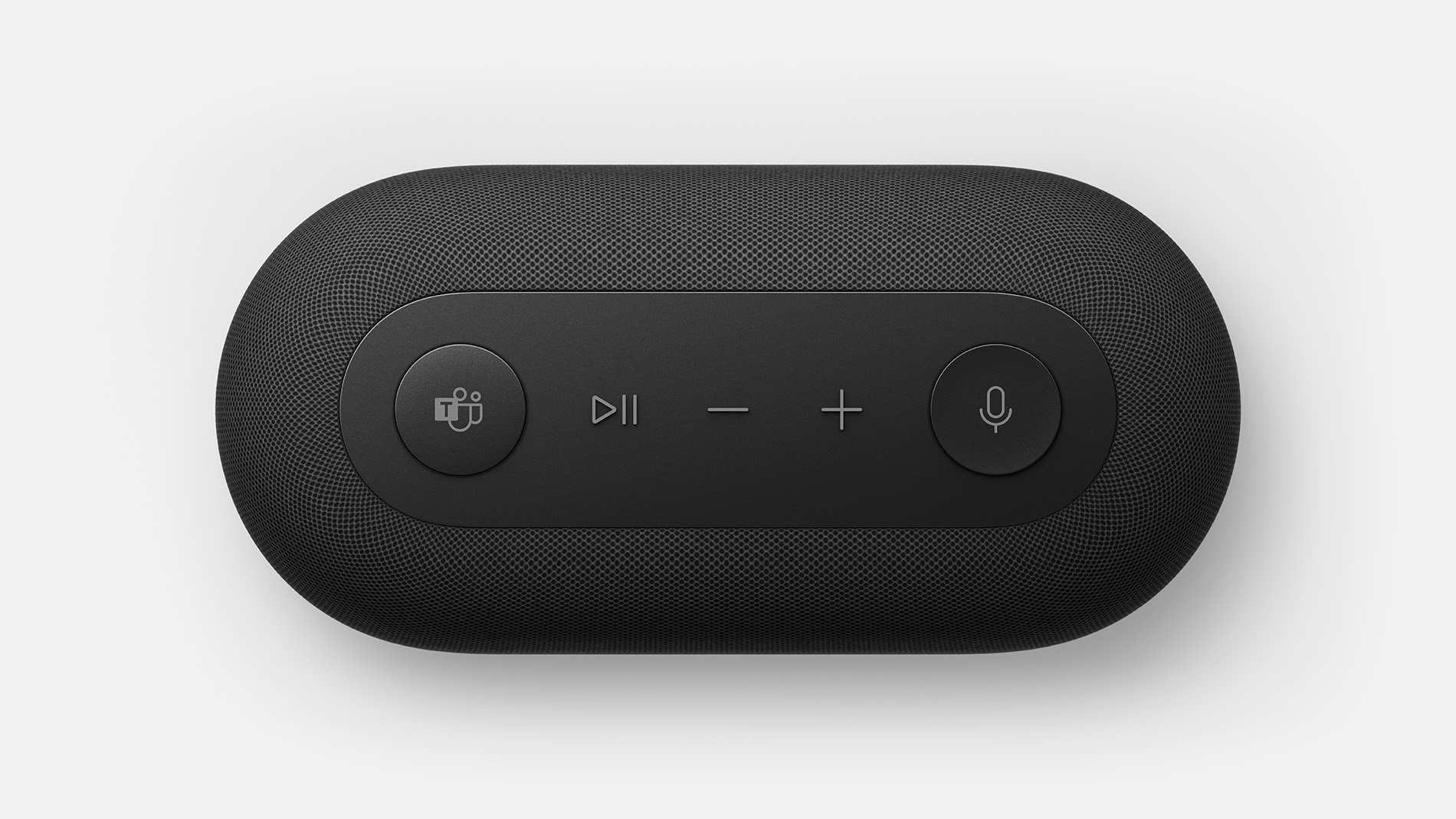Microsoft Keeps Hardware Updates Under the Surface, But Software, Accessibility, and Accessories Add Impact
As part of its Ignite cloud event, Microsoft updated its highest volume Surface laptops and convertibles, and Techsponential was able to get hands-on. Microsoft also updated its long-neglected all-in-one, the Surface Studio, introduced a pair of innovative accessories, and started shipping its Adaptive Mouse, Hub, and other accessibility tools. While the hardware announcements were almost entirely about new silicon inside existing designs, the real story is software. Microsoft always intended its Surface line to be a showcase for the best implementation of its Windows, and some of the new features exemplify that.
Surface Laptop 5
Microsoft didn’t change much in the Surface Laptop, but little in the physical design needed to change. The 3:2 PixelSense display was already excellent, but the addition of Dolby Vision IQ software will just make content look better on that panel. Similarly, the Surface Laptop speakers were good to start, but adding Dolby’s Atmos software and tuning should make them sound better, especially for media and gaming.
The form factor is unchanged: the Surface Laptop comes in 13.5" and 15" sizes, only the silicon has now been re-consolidated around Intel’s latest Evo 12th gen processors, which Microsoft claims offers 50% better performance while still maintaining up to 18 hours of battery life. We’ll have to test that to see; on the last generation Surface Laptop, the AMD Ryzen option offered a better balance of performance and efficiency than Intel. (It is not clear if the AMD version didn’t sell well, if Microsoft was trying to save costs by reducing SKU variation, or if there was a supply chain issue.) Microsoft isn’t adding any ports to the Surface Laptop 5, but the USB-C port is now Thunderbolt 4, supporting up to two 4K monitors. The camera and microphones are the same as before, but new software makes them better.
That’s basically it. Microsoft is playing it safe here. I wish there was a cellular option and more ports, but there wasn’t anything really broken that needed fixing: the Surface Laptop was an extremely balanced laptop with a great display, keyboard, and trackpad. Now it has new silicon, and software improvements make the existing package even better.
Surface Pro 9 and Surface Pro 9 with 5G
The Surface Pro proved that there was a market for convertibles, but Microsoft’s design language was relatively slab-like until the Qualcomm-based Surface Pro X in 2019, with its curved edges and haptic pen stored inside a recess in the keyboard cover. With the Surface Pro 9, Microsoft may have taken brand consolidation too far: not only is the design ID now the same across x86 and Arm, but the product naming is essentially the same, too. Microsoft claims that they share the same name because the performance is similar between the new Intel Evo 12th gen processors in the Surface Pro 9 and Qualcomm’s semi-custom SQ3 processors in the Surface Pro 9 with 5G. We’ll see. One downside to using the Surface Pro X’s design for the Surface Pro 9 is that the headphone jack disappeared, but, like the Surface Laptop 5, the USB-C port is now Thunderbolt 4 and supports a pair of 4K monitors.
Past Windows on Arm products were hampered by poor performance and lots of technical incompatibilities. Techsponential has recently tested Lenovo’s ThinkPad X13s which runs on a similar Qualcomm processor as the Surface Pro 9 with 5G, and the platform is getting much better. Additional horsepower is part of the reason, but Microsoft’s continued investment in improving emulation and updating its apps with native versions are at least as important. Apple has proven that Arm can be both extremely efficient and wildly performant, and Windows is catching up.
In addition to 5G connectivity, the Arm version also has an NPU-specific AI noise reduction feature that is incredible, cutting out leaf blower noise while letting voices through.
Surface Studio 2+
Apple’s 24” iMac starts at $1300 and sells millions of units to people for use in kitchens and home offices. Microsoft’s All-in-One is aimed at a much more specific audience: creators whose workflow demands an enormous, extremely high-resolution display and a pen, and for some reason they prefer not to use a Wacom tablet. Microsoft caters to this niche with the Surface Studio, which mounts a 28” 4500x3000 display on an elegant hinge mechanism that brings it down to the desk for drawing or drafting. The Surface Studio was first introduced in 2016 at a starting price of $3000 placing it out of contention for consumers who might have wanted a more flexible Windows AIO. Techsponential still uses a first-generation Studio for writing and document signing and the design is incredible, but even for light computing tasks it can get overwhelmed. The Surface Studio 2 in 2018, only partly rectified the issue, with its specs not qualifying to run Windows 11 until an exemption was carved out. Microsoft seemingly abandoned the form factor after that.
The new Surface Studio 2+ is another performance update, and only to 11th gen Intel processors, not 12th, and Nvidia 3060 graphics, not higher end 3090 or the new 4000 series. Despite the lack of cutting edge silicon, Microsoft has not done anything to fix the affordability problem: the Surface Studio 2+ is available in only a single configuration (Core i7/32GB/1TB) and costs a staggering $4500 with keyboard and mouse. Microsoft clearly must have a group of dedicated enterprise customers waiting for a Surface Studio that runs Windows 11 without compromise. Like the other Surfaces, Microsoft is adding Dolby Vision and Atmos to boost the A/V capabilities, and there are now three Thunderbolt ports. Microsoft clearly intends for the Surface Studio 2+ to remain a low volume product, and as much as we badly want to test a review unit, Microsoft really ought to build a more budget-friendly version of this form factor. It should also offer the display and Pen as a separate product for those who want to pair it with a desktop CPU, GPU, and power supply.
Software That Elevates the Hardware
Today's Microsoft expects consumers to have heterogenous technology environments, and Microsoft is integrating iCloud photos from your iPhone into the file manager and Photos app. The demo of this functionality was straightforward – you take a picture on your phone, it shows up on the PC – exactly how you’d expect it to work. The Apple TV app is already on the Microsoft Store, now Apple Music is coming to Xbox, too.
Microsoft debuted a new Office (or Microsoft 365) app, Microsoft Designer, with Dall-e integration for image ideation. This is a social/web design tool with futuristic AI capabilities, but Microsoft Chief Product Officer Panos Panay showed that is can also be used to create printed invitations, like Broderbund's Print Shop from 1985.
Microsoft showed off new Windows 11 features like Windows Studio Effects for the new Surfaces: nifty AI that auto-frames speakers on video calls, blurs the background, and changes the focus dynamically. There is also advanced eye contact correction, and, as noted above, background noise reduction on the Surface 9 Pro with 5G. The best feature of Windows 11 – automatic Window snap points – gets more refined, and Microsoft is adding new security controls to block app/script ransomware attacks. There are also new Windows 11 accessibility tools throughout the OS so that they work with any app you run.
Accessibility Hardware Now Shipping
Microsoft previously announced an Adaptive Mouse, Hub, Buttons, and 3D printed add-ons that let people with differing limbs, digits, fine motor control and other disabilities better control their PCs. Also lefties. Investments in accessible design do fit nicely with Microsoft's customer-centric brand, but accessibility is the best use of technology: designing hardware and software for people with unique needs always benefits “regular” users. To prove my point, Microsoft had a demo set up showing how the adaptive hub and buttons can be used to create and execute macros for quickly launching screen snips, and now I need this for my liveblog workflow.
Accessories
There have been many handheld remote controls aimed at giving live presentations, but Microsoft’s Presenter+ is the first remote control for hybrid work presentations, simplifying the task of managing a PowerPoint deck whether being delivered live or via Teams (and presumably other presentation and video apps as well). We didn’t get too many details on this product — and I missed getting hands-on with it at the event, so we’ll have to get a review unit in. It’s certainly a good idea.
Microsoft’s Speaker Dock is a product combination that is so obvious it is shocking that nobody thought of it before: a desktop PC speaker with microphone that doubles as a docking station. Here, too, Microsoft is leaning heavily on Teams and other online presentation use cases, with dedicated buttons for joining a Microsoft Teams call and muting the microphone. The relatively high $250 price point may be justified by the convenience and audio quality, but the port selection really should have included Ethernet.
What We Didn’t Get
Microsoft’s Surface Duo dual-screen smartphone launched two years ago, followed by the Surface Duo 2 last fall. This year, Microsoft had nothing to announce in the smartphone space: no new device, new pricing, or new software. We are still waiting for an Android 12L implementation.
Microsoft also felt that its Surface headphones and earbuds did not need updates, despite the competition significantly improving in the 2 – 3 years since they were introduced.
Perhaps the biggest omission is Microsoft abdicating the foldable laptop space to its Windows OEM partners rather than use Surface to direct the market. Microsoft showed off a Surface foldable back in 2019 – I even got hands-on with the prototype – but cancelled it rather than bring it to production. Lenovo’s original ThinkPad X1 Fold had a similar design to that lost Surface. Having learned from making that device, Lenovo is launching a second generation X1 Fold next month with a much larger display and much better value proposition, but there is no Surface equivalent. Microsoft also did not update its other unique Surface form factor, the Surface Laptop Studio.
To discuss the implications of this report on your business, product, or investment strategies, contact Avi at avi@techsponential.com or +1 (201) 677-8284.

























